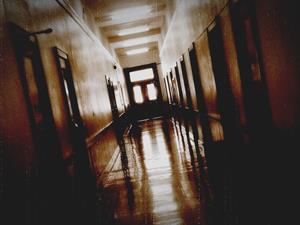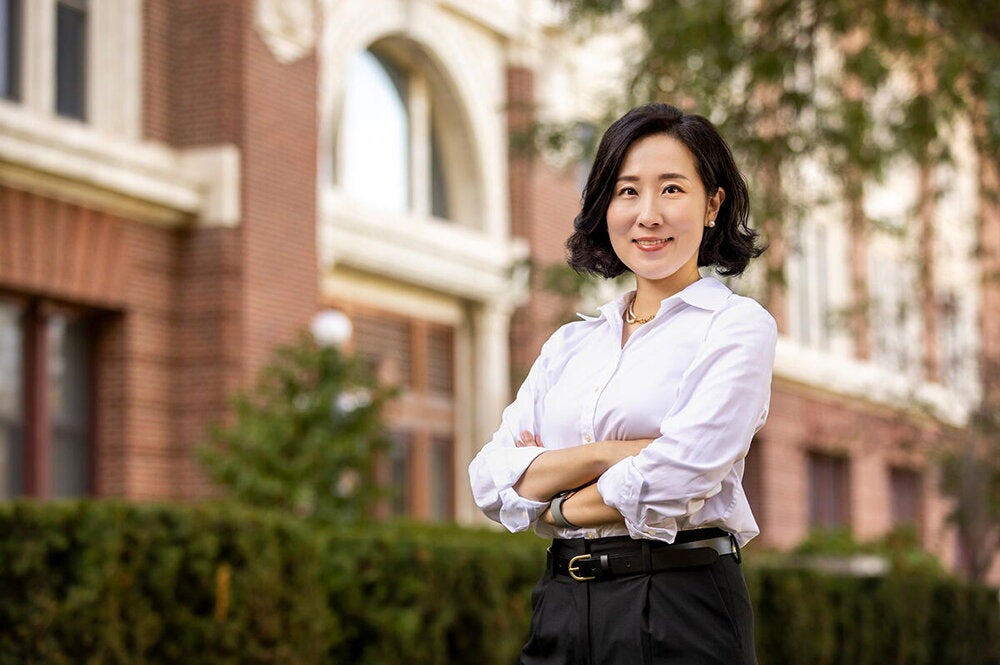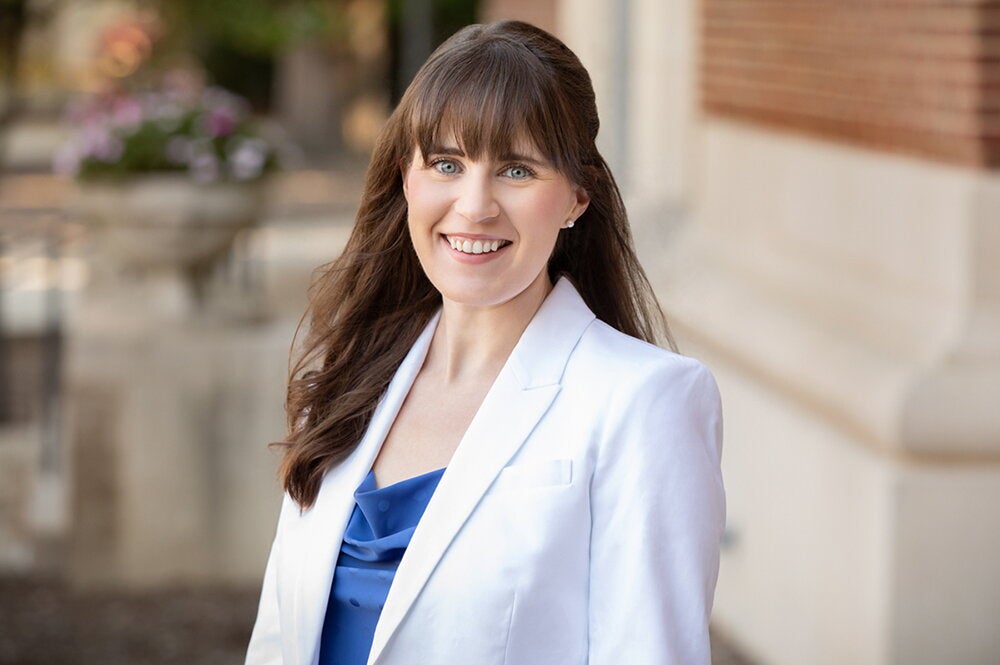

It was just another night of homework for one of Susan Davis’ students when he sat down to watch a scary movie with his friends. He got out his school supplies—pizza, pop, and popcorn—and after the movie ended, led a legend-telling session, taking notes on the various campus myths swapped by his friends.
While many students associate homework with a night holed up in the library or alone in their rooms, interacting with other students is an important part of the coursework required for Davis’ unique, new class—Communication 362: “Folklore as Communication”—in which her students actually collect campus folklore to understand the larger implications behind the stories.
“I ask my students to keep their ears open and to think about stories [about the campus] they might have heard,” says Davis, professor of communication. “Usually they go find someone in a class, or a friend, or a roommate, and they find out what they know.”
The class (formerly Communication 396) is one of 60 courses sponsored by the Ethnography of the University Initiative, started by the University of Illinois in 2002. The program seeks to engage students in research about their own universities, in this case emphasizing the students’ interpretations of the campus experience.
Davis and her students accomplish this by collecting proverbs, sayings, legends, stories, and rumors pertaining to the U of I campus and analyzing them. They also look at customs and festivals.
“Students find a surprising variety of stories across the campus and notice that stories evolve and change over time,” Davis says. “At the same time, college stories across the U.S. bear many similarities and deal with common themes.”
After her students have collected their stories, Davis asks them to look for different versions of each story, research the context behind them, and consult handbooks and indexes for any scholarly articles written about similar stories.
From there only one question remains: Why do people tell these stories?
According to Davis, the purpose of studying folklore is not to determine whether the legends are true. “If there is a rumor about the Alma Mater standing up or sitting down,” she says, “we don’t investigate whether or not that could ever happen; we are interested in why people tell that story and why they tell it in different versions.”
Davis has found that folklore is often a way of dealing with the fact that life can be difficult and scary. “I think it is difficult and scary for everybody. But it is in particular ways for undergrads, as young adults who are moving out into the world and are in a special place called the university.”
Subsequently, much of the University’s folklore revolves around death. This includes the ubiquitous English Building myth, in which a female student supposedly killed herself, drowned in the pool, or was murdered there and now haunts the building, and the large populations of ghosts attributed to various sororities on campus.
“One of the things we take from that is that students, at least at times, have a recognition of death, be it in timely or untimely circumstances,” Davis says.
Other stories, such as legends offering explanations for unusual buildings, stem from what appears simply to be curiosity. For example, a popular legend exists that Altgeld Hall is part of a jigsaw puzzle of other university buildings in Illinois—originating most likely from the building’s seemingly strange architecture and the multiple libraries on other Illinois university campuses that share the same name.
Davis says that legends are often, at some level, used by students as a means of locating themselves on campus. “I think that legends, especially about physical places, are our ways of attaching ourselves to the campus,” Davis says, “making it feel like a place that we belong to, that we fit into, and that we know something intense or personal about—that it’s not such a huge, anonymous place, which it can seem, especially to freshmen.”
Davis and her students interpret legends by adopting different narrative frameworks. This allows them to see the various ways a legend can be understood.
“The Freudian theory of ghost stories, for example, is potentially fairly different from a folklorist’s theory of the ghost story,” Davis says. “Freud would say that a legend about something weird or uncanny is being told because there is some unresolved issue or conflict that cannot be given voice and can only appear as a strange vision or a weird feeling. A person who studies folklore would say that these stories are actually relationships between people, and that they are a way of establishing, making, and keeping connections.”
Findings and analyses from Davis’ classes can be found in the online research archive IDEALS.
Lesser-Known Legends
Many students are familiar with popular campus legends, such as the English Building ghost and the Eternal Flame. However, there are plenty of other public campus legends that are not as widely recognized. Here are a few:
University YMCA: Decades ago, a large painting of a Native American chief was located in the basement of the University YMCA building. Legend has it that when the lights went out at night, the chief would step out from the painting and wander the building.
Alma Mater: It is rumored that the Alma Mater will sit down whenever a virgin graduates from the University.
Lincoln Hall Ghost: Overshadowed by the English Building ghost, Lincoln Hall’s ghost supposedly can be found at times peering over Wright Street from a third story window.
Natural Resources Building: A graduate student working in the building reported on several occasions in which he was alone in there at night that the elevator, with no one in it, mysteriously traveled from the upper floor to the lower floor. A friend reported the same story while working under similar circumstances.
Foreign Languages Building: Despite a handful of contradictory sources, many people believe that the strange architecture of the building was for the purpose of protecting what used to be the innovative PLATO computer system from a nuclear explosion.
Other “haunted” sites: The Main Library Stacks, the Band Building, and Sousa Archives.


